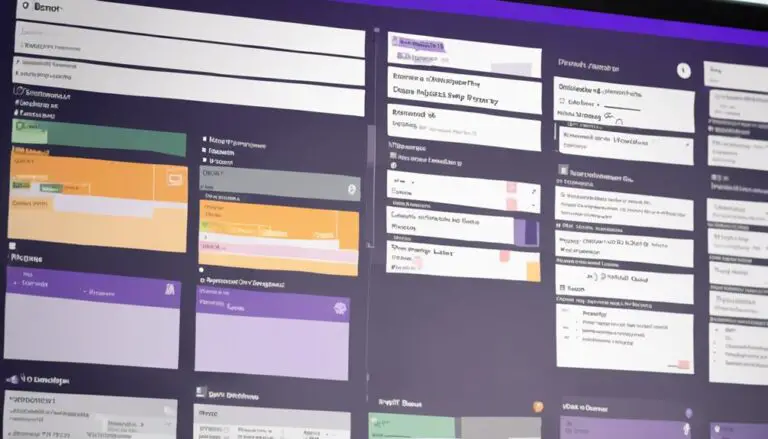Did you know that a significant percentage of Kanban users are questioning the role of story points in their workflow? Understanding whether Kanban incorporates story points can provide valuable insights into your project management strategies.
By exploring this comprehensive guide, you'll unravel the intricate relationship between Kanban and story points, shedding light on the rationale behind their absence and the potential impact on your estimation process. In addition, you will gain insights into alternative estimation methods that can be used in conjunction with Kanban, allowing you to adapt your process to better suit your team’s needs. Ultimately, understanding the connection between Kanban and story points will provide you with the knowledge to make informed decisions about how to improve your team’s estimation accuracy and efficiency using story points.
Let's navigate this intriguing terrain together to uncover the nuances of Kanban's approach to task estimation.
Key Takeaways
- Kanban utilizes story points for task estimation and prioritization.
- Story points aid in enhancing predictability and planning capabilities.
- Integrating story points in Kanban improves task management and collaboration.
- Challenges in story point implementation can be overcome with best practices and a balanced approach.
Understanding Kanban Basics
Curious about how Kanban works and its fundamental principles for efficient workflow management? Let's dive into Understanding Kanban Basics.
In Kanban, team members play a crucial role in visualizing the workflow, limiting work in progress, and enhancing overall efficiency. Each team member collaborates to ensure that tasks move smoothly across the board, focusing on completing one task before starting another. This method fosters a sense of shared responsibility and encourages a collective effort towards achieving common goals. By actively engaging team members in the process, Kanban promotes a culture of continuous improvement and adaptability.
Team members in Kanban boards have the flexibility to adjust priorities based on real-time needs, ensuring that the team stays responsive to changing requirements. This approach empowers individuals to take ownership of their work and contribute meaningfully to the team's success. By emphasizing collaboration and open communication among team members, Kanban creates a supportive environment where everyone feels valued and motivated to deliver high-quality results.
Exploring Story Points in Agile
Let's start exploring story points in Agile together. Understanding the basics of story points, estimating complexity levels, and planning agile tasks with points will empower your team's estimation process.
Embrace the collaborative nature of story points to enhance your Agile planning and achieve more accurate forecasts over time.
Story Points Basics
In Agile, exploring the basics of story points involves understanding their role as a relative estimation technique for measuring the effort and complexity of tasks. Here are some essential points to help you grasp the fundamentals of story points:
- Embrace the idea that story points are about relative sizing, not time constraints.
- Collaborate with your team to assign story points based on collective insights.
- Adapt to changes by adjusting story points as you uncover more details about tasks.
- Encourage open communication to ensure everyone's perspective is considered in the estimation process.
- Remember, story points are a tool to aid in planning and prioritizing work effectively.
Estimating Complexity Levels
To effectively estimate the complexity levels of tasks in Agile using story points, engage your team in collaborative discussions to assess effort, risk, and uncertainty factors. Encouraging open communication within your team will allow for a more accurate evaluation of the complexity associated with each task.
By considering these factors together, you can assign story points that reflect the relative difficulty of different user stories or tasks. Remember, story points aren't about determining exact time frames but rather focusing on the effort and risk involved.
This collaborative approach fosters a sense of belonging and unity within the team, promoting a shared understanding of the project's intricacies. Embrace the process of estimating complexity levels to enhance your Agile workflow and achieve better project outcomes.
Agile Planning With Points
Transitioning from estimating complexity levels to Agile planning with story points, you empower your team to gauge effort and complexity more effectively, fostering improved prioritization and communication in your projects. By embracing story points on your Kanban boards, you can enhance your team's planning process in the following ways:
- Promoting Collaboration: Encouraging team members to discuss and align on task complexity.
- Driving Accountability: Holding individuals responsible for the estimated effort of their work.
- Boosting Confidence: Providing a clearer picture of project progress and potential roadblocks.
- Enhancing Adaptability: Allowing for flexibility in adjusting priorities based on changing circumstances.
- Fostering Team Unity: Creating a shared language and understanding of the work at hand.
Integrating Story Points in Kanban
By integrating story points in Kanban, you can enhance task estimation and improve predictability in your workflow. Using Kanban allows you to enable story points on specific tickets, aiding in accurately estimating the effort required for each task.
Atlassian has taken note of users' requests for story point features in Kanban, hinting at the importance and effectiveness of this integration. While comprehensive reports based on story points in Kanban projects are still in the works, the ability to right-size items is crucial for maintaining a predictable flow and preventing bottlenecks.
Story points in Kanban play a significant role in forecasting work completion and planning based on backlog estimation. By embracing story points within your Kanban system, you empower your team to work collaboratively towards achieving shared goals with a clearer understanding of task complexities and timelines.
Benefits of Using Story Points
You're on the right track by considering the benefits of using story points in your Kanban process.
They can significantly improve your team's estimation accuracy, allowing for better planning and forecasting.
Embracing story points fosters a culture of continuous improvement, enhancing your team's productivity and refining your iterative planning methods.
Agile Estimation Accuracy
To enhance your Agile estimation accuracy effectively, consider leveraging the benefits of using story points in your Kanban workflow. When incorporating story points, you can benefit from:
- Increased transparency in task complexity and effort estimation.
- Better forecasting capabilities for work completion timelines.
- Enhanced collaboration among team members through shared understanding of task sizes.
- Improved predictability in task completion based on historical data.
- More informed decisions about work prioritization and capacity planning.
Team Productivity Measurement
Enhance your team's productivity measurement by harnessing the benefits of using story points in your Kanban workflow. When teams use story points, they gain a powerful tool for estimating task complexity and discussing work efforts effectively.
This common language promotes better planning, helping teams forecast more accurately and meet deadlines consistently. Moreover, story points foster collaboration and consensus building among team members during backlog grooming and planning sessions.
Iterative Planning Improvement
Improve your team's iterative planning process by harnessing the benefits of using story points in your Kanban workflow. By incorporating story points, you can:
- Enhance collaboration and shared understanding among team members.
- Increase transparency and alignment on task priorities.
- Foster a sense of achievement and progress with each completed story point.
- Enable better decision-making based on accurate task estimations.
- Cultivate a culture of continuous improvement and adaptability within your team.
Embrace the power of story points in Kanban to streamline your planning, boost efficiency, and elevate your team's overall performance. Together, you can achieve greater success and productivity in your projects.
Challenges and Considerations
Facing challenges and considerations when implementing story points in Kanban is a natural part of the process that can lead to valuable insights and improvements in workflow efficiency.
One challenge you may encounter is handling a high number of story points, which can sometimes make it challenging to accurately estimate and prioritize tasks. It's essential to maintain a balance and avoid overcomplicating the process to ensure smooth workflow management.
Additionally, there's a risk of gamification and misunderstandings regarding the purpose of story points, which can impact the team's ability to effectively use them for task estimation. By combining Scrum and Kanban practices, you can optimize workflow efficiency and address challenges in estimating tasks.
Remember that transparency and accountability are fundamental in Agile methodologies, including the use of story points in Kanban. Educating and training your team on Agile principles can help mitigate misunderstandings and ensure the effective use of story points in Kanban, ultimately enhancing predictability and planning in task estimation.
Best Practices for Implementation
To effectively implement story points in Kanban, ensure that clear communication and understanding are prioritized within your team. When integrating Scrum and Kanban practices, you enhance workflow efficiency and predictability. Here are some best practices to consider:
- Embrace Transparency: Share progress openly to foster trust and collaboration.
- Encourage Accountability: Hold team members responsible for their commitments to promote a sense of ownership.
- Continuous Improvement: Embrace a mindset of growth and learning to adapt to changing circumstances.
- Educate and Train: Address any misunderstandings of Agile principles through education to enhance story point implementation.
- Celebrate Successes: Acknowledge achievements and milestones to boost morale and motivation.
Case Studies and Success Stories
Explore the transformative impact of real-world case studies showcasing the successful integration of story points in Kanban methodology.
Case studies reveal how teams have effectively implemented story points in Kanban, leading to improved task estimation and forecasting. By utilizing story points, teams have reported enhanced predictability and planning capabilities, fostering better collaboration and a sharper focus on delivering value.
Success stories underscore how incorporating story points in Kanban can boost productivity and efficiency within organizations, streamlining workflow processes. These real-world examples offer concrete evidence of the benefits derived from using story points in Kanban, such as achieving project goals and meeting deadlines with greater accuracy.
Frequently Asked Questions
Do You Do Story Points in Kanban?
In Kanban, you typically don't use story points for estimation. Instead, time tracking is key. However, if you're keen on story points, there have been requests for this feature in Kanban, so stay tuned for updates!
Are There Stories in Kanban?
In Kanban, stories are not a standard element. Work is managed by priority and flow. While story estimation isn't a focus, you can adapt Kanban to include stories if it benefits your team's workflow and communication.
What Is the Difference Between Scrum and Kanban Story Points?
In Scrum, story points estimate the size of backlog items, aiding velocity calculations. Kanban, opting for cycle time and throughput, doesn't typically use story points for issue estimation. Understanding this distinction enhances your project management strategies.
What Are the 5 Elements of Kanban?
In Kanban, the five elements are crucial for success. Visualize work, limit WIP, manage flow, define policies, and strive for continuous improvement. Embrace these principles to enhance teamwork, efficiency, and overall project outcomes.
Conclusion
As you reflect on the debate over story points in Kanban, you may find yourself at a crossroads. But remember, like a traveler on a winding road, the journey is just as important as the destination.
Embrace the flexibility of Kanban's focus on continuous improvement and workflow optimization. Whether you choose to incorporate story points or not, the key is to adapt, learn, and grow with each step you take towards your goals.
Keep moving forward with confidence and an open mind.





